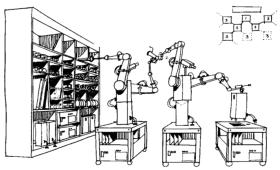
EnGen Institute 1992-2022

I N
S T I T U
T E
APPLICATION OBJECTIVES
TO APPLY OUR CORE RESEARCH OBJECTIVES TO DEVELOP -
TOTALLY SUSTAINABLE SURVIVAL SYSTEMS WITH LIFE SUPPORT SYSTEMS:
Organic life-support depends on a specific set of conditions being present in the physical environment.
When those conditions are absent life will expire unless life-sustaining conditions are created and
maintained by life support systems within a survival (closed protective containment) system (e.g.
submarine, biosphere, spacebase). Total sustainability requires recycling life support materials and -
CONSTRUCTOR TECHNOLOGY BASED MANUFACTURING & PRODUCTION SYSTEMS
All man-made systems wear and fail, so that the capability to repair & regenerate all of its machinery,
while remaining operational, must be an integral part of a survival system for indefinite sustainability.
This requires the capability to manufacture, test, assemble and install all of the parts of the survival
system while remaining operational, which requires systemically closed and complete Multi-stage
Developmental Constructor Technology. When automated this greatly multiplies industrial productivity.
EARTHBASE: SURVIVAL SYSTEM DEVELOPMENT FROM CONSTRUCTOR TECHNOLOGY
Together constructor technology & survival systems with design & control software form a ‘Space Seed’.
ENVIRONMENTALLY SUSTAINABLE SYSTEMS
A Controlled/Contained Environmental Life-Support System (CELSS) recycles all organic materials and
maintains a life-supporting physical environment internally. A remote isolated CELSS also needs to
acquire energy from its surrounding environment. If constructed from or exchanging material with its
environment it should ensure the materials it exchanges are life compatible and sustainably recycled.
ACCELERATED NATURAL CLIMATE RECOVERY
A man-made life-support system exchanging materials with the surrounding natural environment should
do more than act to maintain the status quo in its internal and external environments it should have the
capability to correct variations of these environments from life-supporting conditions.




























